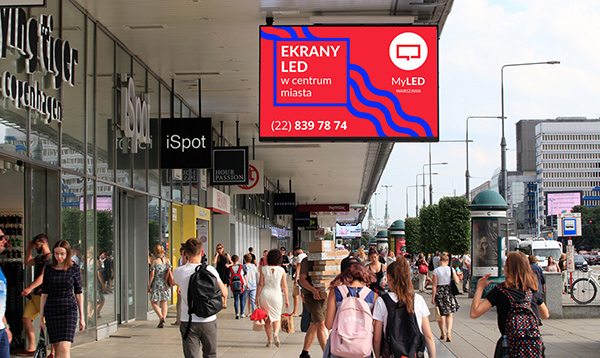How Does OOH Advertising Affect Us, Internet Users?
[vc_row type="in_container" full_screen_row_position="middle" scene_position="center" text_color="dark" text_align="left" overlay_strength="0.3" shape_divider_position="bottom"][vc_column column_padding="no-extra-padding" column_padding_position="all" background_color_opacity="1" background_hover_color_opacity="1" column_shadow="none" column_border_radius="none" width="1/1" tablet_text_alignment="default" phone_text_alignment="default" column_border_width="none" column_border_style="solid"][image_with_animation image_url="10632" alignment="" animation="Fade In" border_radius="none" box_shadow="none" max_width="100%"][divider line_type="No Line" custom_height="40"][vc_column_text]It turns out that the impact of OOH advertising is significant - as demonstrated by the “OutPerform” study. It was conducted by Outsmart - a marketing organization bringing together outdoor advertising companies from the British market. The study showed that an advertising campaign run on OOH media translates into a 17% increase in online brand interest.
The aim of the study was to better understand the relationship between outdoor advertising and smartphones.
As research shows, people in Great Britain spend an average of 3 hours a day moving outside their homes, and 75% of them own a smartphone. The situation in Poland is similar, as confirmed by the Outdoor Track research conducted by the Institute for Outdoor Research.
In our country, a slightly smaller percentage of people have smartphones - according to data published by the newspaper Rzeczpospolita in 2017, it was 64% of people (and 62% the year before, so we can assume that we will quite quickly reach a similar percentage as in Great Britain).
This means that the reaction to advertisements we see on the street can be simpler and faster than just a few years ago.
To investigate how, where, and why outdoor advertising connects people and brands, 470 people aged 16-44 were recruited in nine major UK cities. Each of these individuals installed a special application on their smartphone as well as on their home tablet, laptop, and desktop. The application collected data on where the participants were at any given moment and information about their online activity throughout the entire day.
Additionally, thanks to data obtained from the Route system (the research standard for outdoor advertising in Great Britain) regarding the location of OOH media and thanks to data on advertising campaigns run on each medium, it was possible to determine where each study participant was at a given time of day and which outdoor advertising media and advertising campaigns they passed.
The next step was monitoring these people's online activities, which allowed for building a large database through which it was possible to understand how outdoor advertising affects our internet activity.
The study showed that online activity in response to an OOH advertising campaign increases by up to 38% for the top 20 best executed and most effective campaigns, and this rate is even higher among millennials
and Generation Z.
66% of smartphone actions were related to searching for information about the brand or visiting the brand's website. 57% of respondents who took action were new customers of the brand or those who hadn't been interested in it for a long time, which shows that outdoor advertising helps reach a wider audience, not just those loyal to the brand but also potential new customers.
As we can see, in the era of smartphones and mobile internet, outdoor advertising cleverly and effectively connects brands with people.[/vc_column_text][divider line_type="No Line" custom_height="40"][/vc_column][/vc_row]

